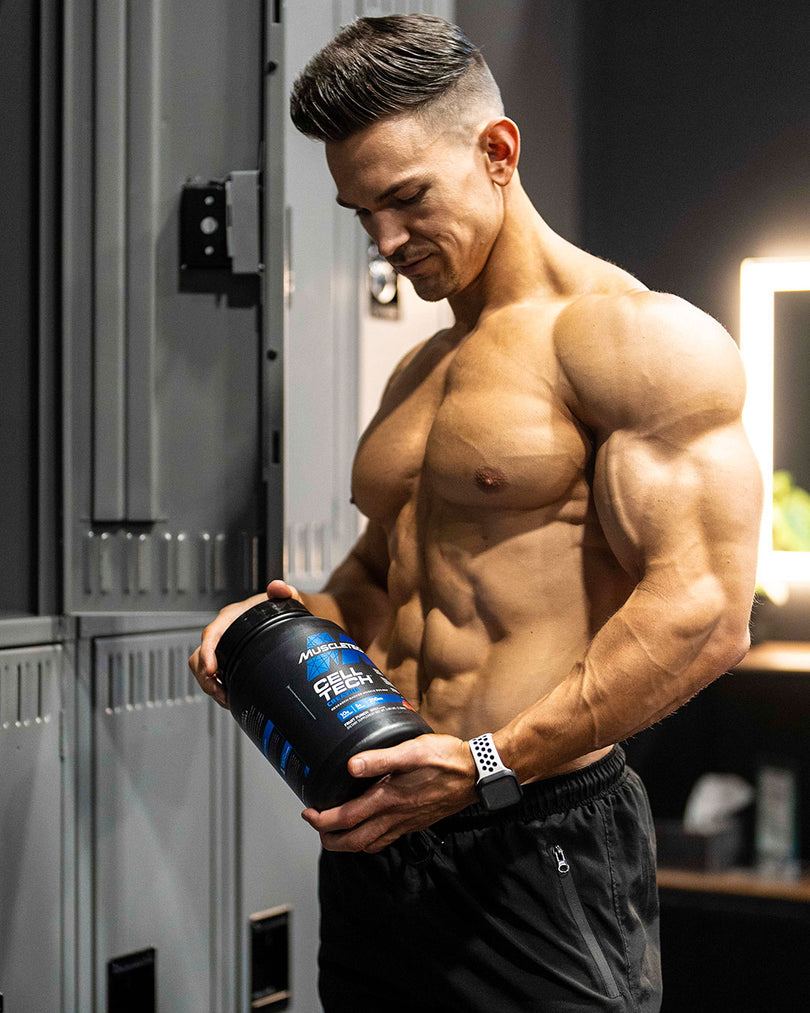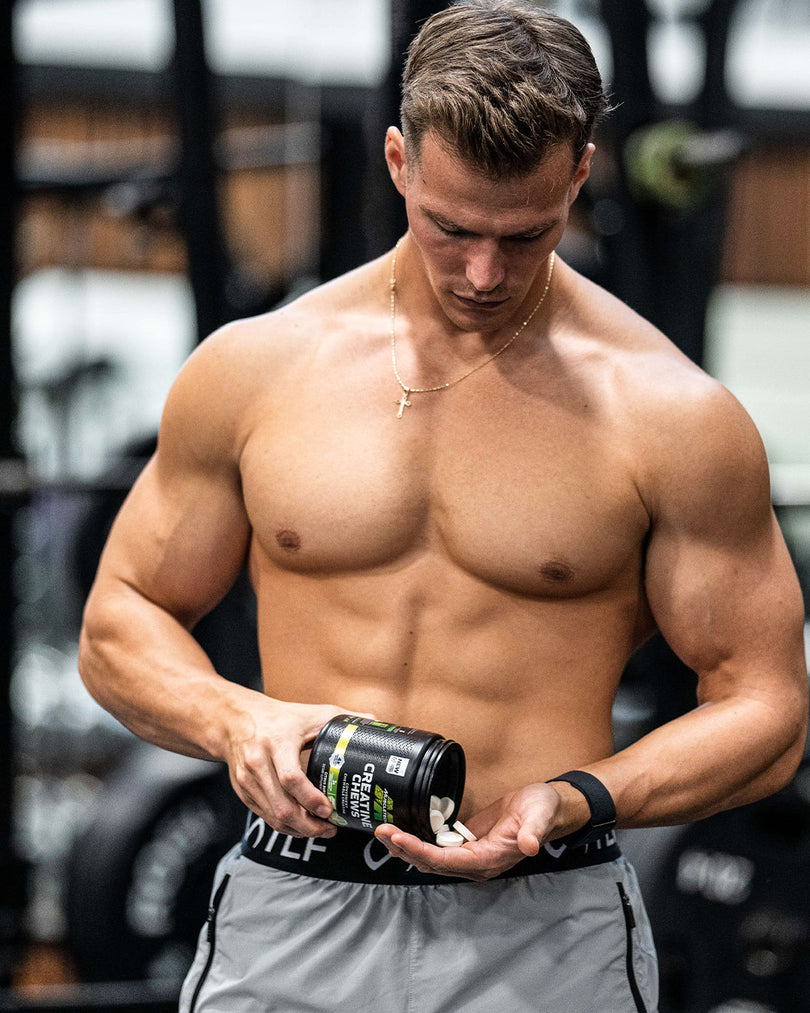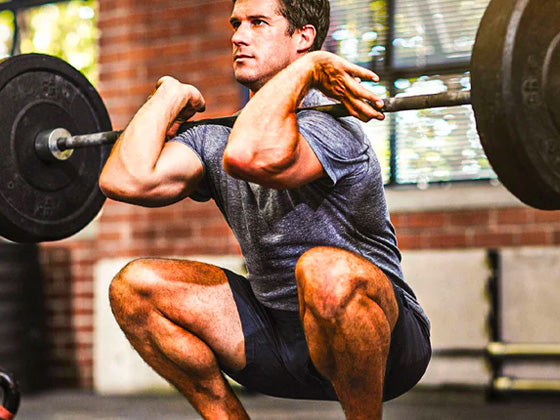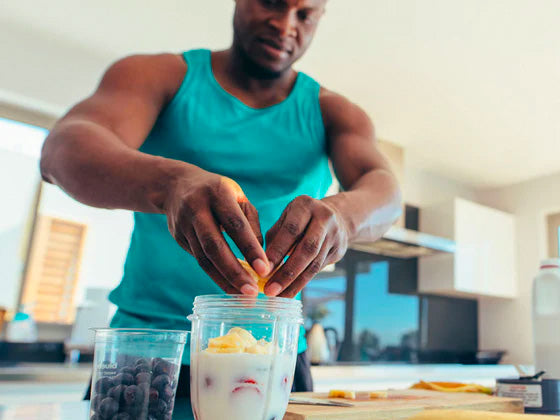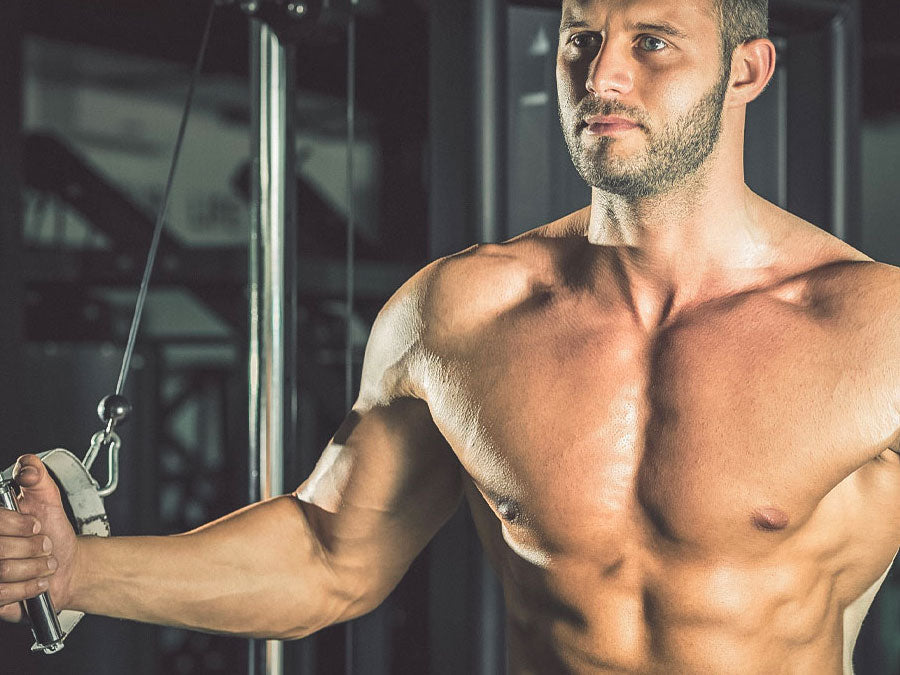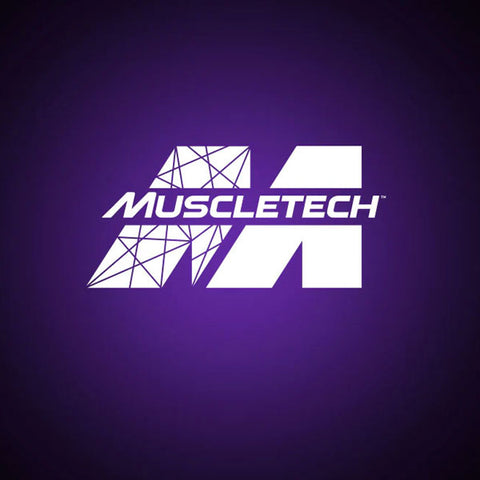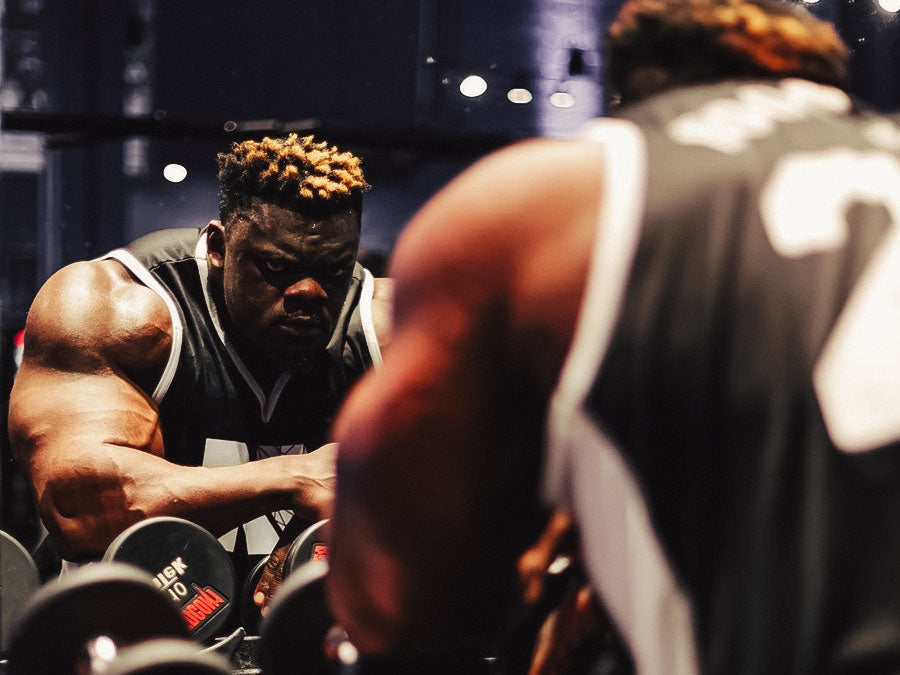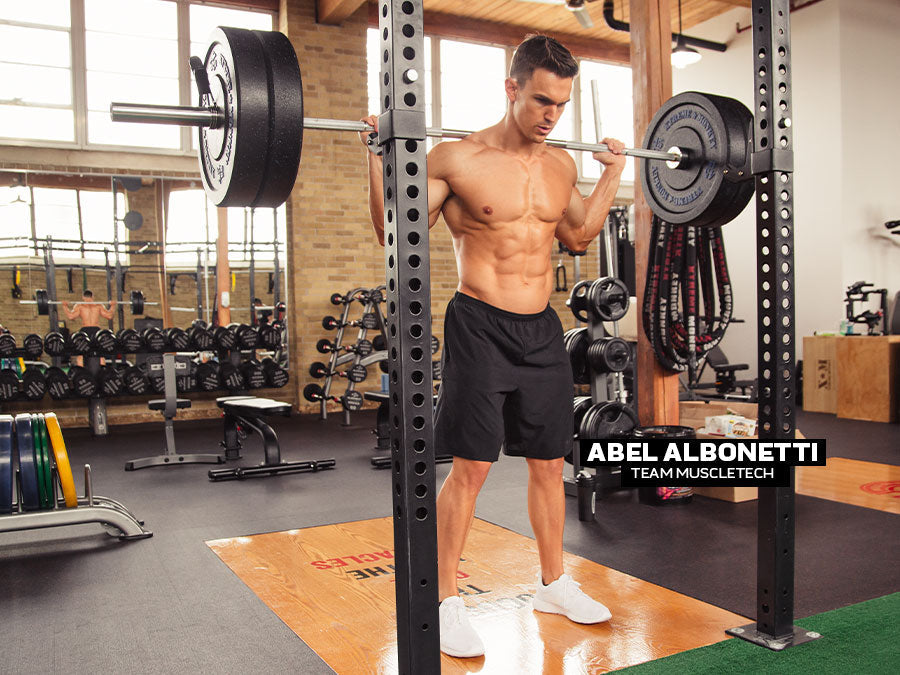So, whether you’re after an athletic, strong, and chiseled physique, or are more interested in building your chest so that you can continue to perform everyday activities, we’ve got you covered with the best chest exercises for men, which you can do either at home using your own bodyweight or at the gym.

Table of content
Understanding Your Major Chest Muscles
Before you start doing any chest exercises, you should get to know the major chest muscles that you’ll be working, as well as their main functions.
The major chest muscles are the pectoralis major, pectoralis minor, and serratus anterior. The pectoralis major and pectoralis minor are often referred to as your ‘pecs’ when talked about together.
Pectoralis Major
The pectoralis major is the dominant muscle in the upper chest. This large fan-shaped muscle stretches from the armpit up to the collarbone and down across the lower chest region on both sides of the chest. The two sides connect at the sternum (or breastbone).
The pectoralis major has two parts – a lower portion called the sternocostal head and an upper portion called the clavicular head. Originating at the sternum, the sternal head accounts for 80% of the pectoralis major’s total size and powers the bulk of the muscle’s actions. The clavicular head originates at the clavicle and works to flex the humerus, which allows you to raise your arm forward.
Pectoralis Minor
The pectoralis minor is a small, triangular muscle that works in tandem with the pectoralis major. The pectoralis minor sits on your front, but it actually controls the structures associated with your backside. The pectoralis minor also helps pull down and spread apart your shoulder blades, and can assist with breathing.
Serratus Anterior
The serratus anterior muscle is a fan-shaped muscle at the lateral wall of the thorax (the chest region of the body between the neck and abdomen). The main part of the serratus anterior lies deep under the scapula (shoulder blade) and the pectoral muscles. When you lift weights overhead, you’ll notice the serratus anterior in action.
The Main Movements of the Chest Muscles
You pretty much use your chest muscles all day long since they’re responsible for moving your arms across your body and up and down. So, whenever you’re pushing a door open, or are even washing your hair, you’re using your chest muscles.
Your chest muscles are also responsible for other movements such as flexion (bending your arms), adduction (moving your arms toward the midline of your body or toward another part), and rotation (your body’s way to create horizontal force from a standing position).
Save on Supplements to Increase Strength
Home Chest Workout: Chest Exercises for Men
It’s important for men to do chest exercises in order to keep all of their muscles strong for all of their daily activities. After all, the stronger their chest muscles are, the stronger their entire body will be.
Typically, chest exercises either involve pushing your arms away from your body or pushing your body away from your arms. That said, before you do any chest workouts, you need to warm-up properly.
Dynamic warm-ups – consisting of movements with a progressive range of motion that mimic the exercise you’re about to do – are generally considered to be the best approach to a pre-workout warm-up. That’s because dynamic warm-ups lengthen your muscles and prepare them to work under heavier loads.
Now, without further ado, here are some of the best chest exercises for men to do at home.
Also Read: Isometric vs Isotonic Exercises
Standard Push-Ups
Standard push-ups are one of the best chest workouts for men to do. Period. That’s because push-ups provide 61% chest muscle activation.
In addition to strengthening your chest, push-ups also strengthen your arms and shoulders. And as an added bonus, you can do push-ups pretty much anywhere, including from the comfort of your own home.
To do a push-up with proper form, get down on all fours, placing your hands slightly wider than your shoulders. Then straighten your arms and legs. Next, lower your body until your chest nearly touches the floor. Pause, and then push yourself back up. Then repeat for your desired number of reps and sets.
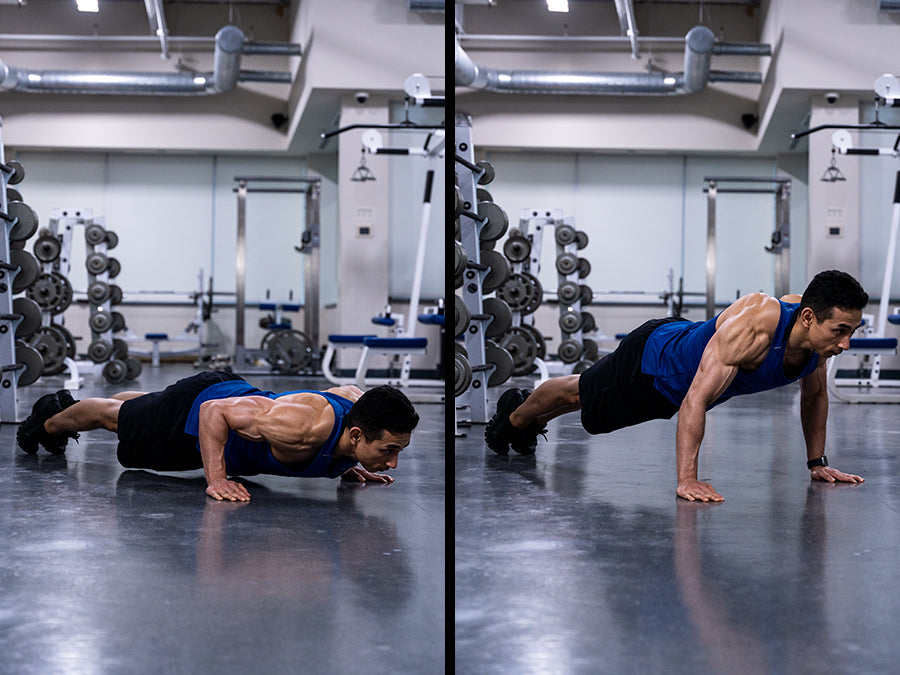
Decline Push-Ups
Another great thing about push-ups is that there are many push-up variations that you can do at home. By switching up the types of push-ups that you do while you’re working out, you can target your chest from a variety of directions.
Decline push-ups place the muscle-building emphasis on your lower pectorals, which will help you build a well-rounded and more defined chest in the long run.
To do decline push-ups, place your feet on a bench (or on your couch or bed) with your hands planted on the floor in front of you. Then lower your body down until your chest almost reaches the floor. Press your body back up to the starting position while squeezing your chest. Pause briefly at the top, and then repeat.
Staggered Hands Push-Ups
For those of you interested in a more challenging push-up variation, give staggered hands push-ups a try. This chest workout trains your push-up muscles asymmetrically across your body and requires more core activation for stability.
To do staggered hands push-ups, begin in a standard push-up position. Then move one hand forward and your other hand backward so that they’re offset by about six to 12 inches. Bend your elbows to lower your chest until it’s slightly below the level of your bent elbow, and then extend your elbows to push back up to the starting position.
Keep your elbows tight to your body throughout the movement. After one (or more) repetitions, switch your hand positions in order to work each side evenly.
When performing staggered hands push-ups, just keep in mind that the farther apart your hands are, the more difficult it will be to do the exercise.
Once you get the hang of staggered hands push-ups, you can give one-arm push-ups a shot, which will double the weight on a single arm and further activate your core for stability.
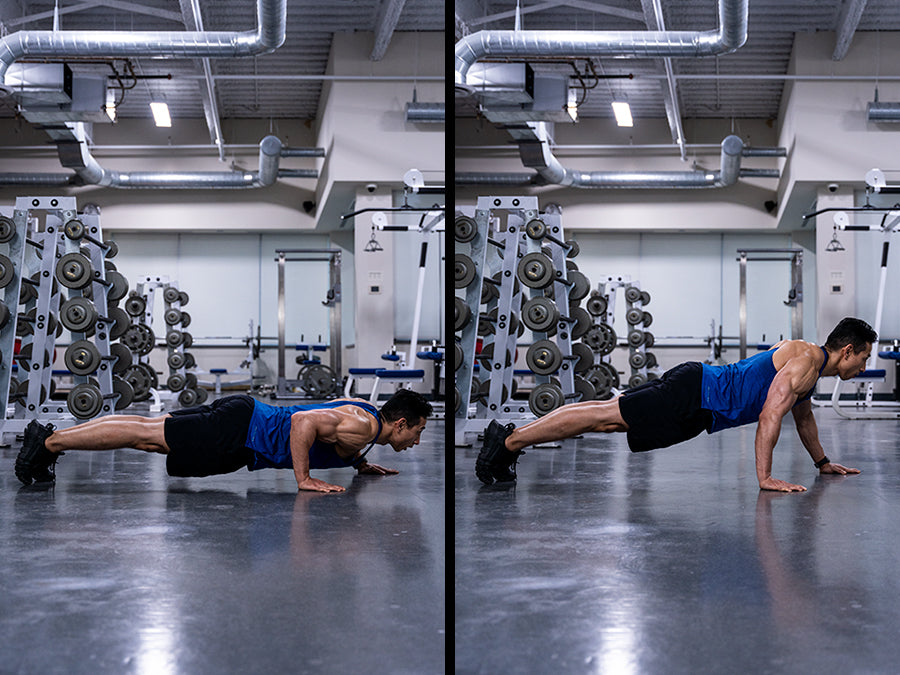
Chest Exercises For Men At A Fully Equipped Gym
If you belong to a gym, you might as well take advantage of all the equipment that the gym has to offer. So, here are some of the best chest workouts that you can do at the gym for fast pectoral growth.
Barbell Bench Press
Considered the ‘king’ of upper body exercises, the barbell bench press is a classic overall chest builder. In fact, researchers determined that the barbell bench press is the most effective way to strengthen and tone your chest since the barbell bench press provides 100% chest muscle activation.
To perform the barbell bench press, lie flat on the bench with the barbell in the rack above you. Then grasp the barbell in both hands (most often in an overhand grip about shoulder-width apart). Lift the barbell off the rack and position it over your chest. Lower the barbell down until it’s right over your chest. Then press the barbell upwards until your arms are straight and your elbows are locked. That’s one rep. Repeat for your desired number of reps and sets.
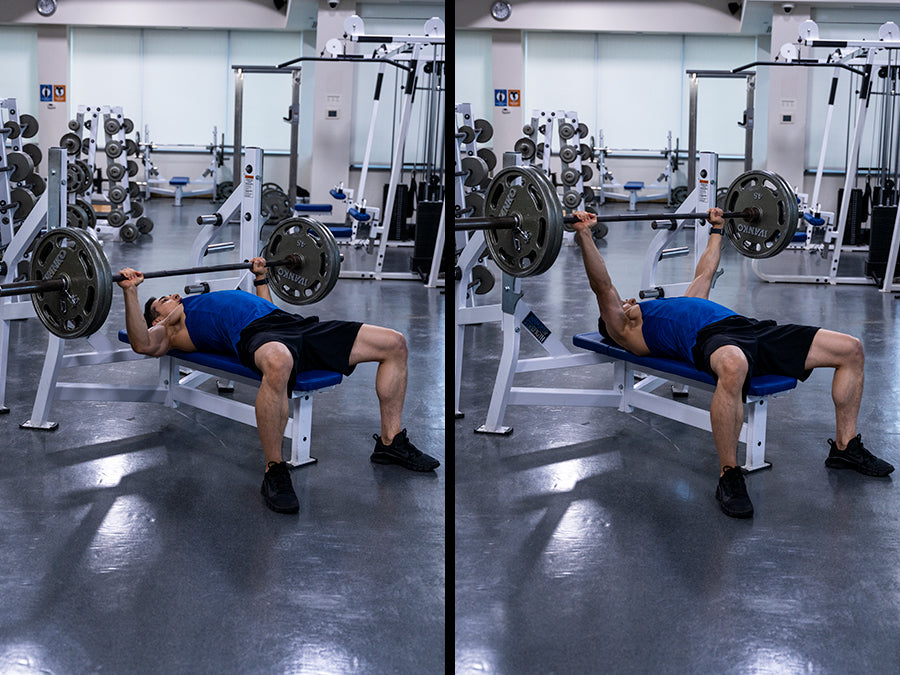
Seated Chest Press
The seated chest press is an upright version of the bench press. So, if you’re not fully comfortable bench pressing yet, or maybe you just want to press heavier weights with more control, the seated chest press will be an excellent addition to your upper-body strength workout. That’s because the seated chest press helps build the pectoral muscles, while also working the biceps, deltoids (the main muscle of the shoulder), and latissimus dorsi (the largest muscle in the upper body).
To perform a seated chest press, start by setting the machine at the desired weight. Then sit with your feet firmly on the floor about shoulder-width apart. Next, grab the handles with a full grip (your thumbs circled around the handles). While keeping your head steady against the back support and your neck still, exhale and push outward until your arms are fully extended. Pause briefly at full extension. Then bend your elbows and return to the starting position. Repeat for your desired number of reps and sets.

Incline Barbell Bench Press
Pressing on an incline set-up works your clavicular head, which is why the incline bench press is a great exercise to do if you want to make your pecs pop.
To perform the incline barbell bench press, lie back on a bench set to an incline angle. Lift a barbell to shoulder height with your palms facing away from you, and breathe out as you press up with both arms. Then lock your arms and squeeze your chest before returning slowly to the starting position. Repeat for your desired number of reps and sets.
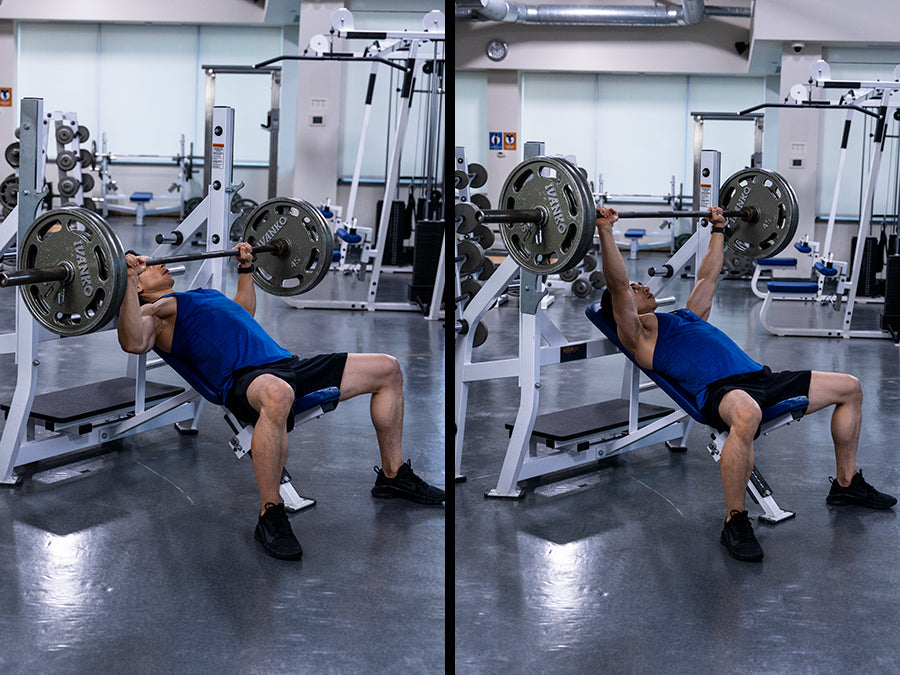
Incline Dumbbell Bench Press
While barbell bench presses are a chest-bulking staple, dumbbell presses offer different variants that can help you build a bigger chest. Using two separate weights also allows you to have a greater range of motion, while activating more stabilizing muscles, as well.
To perform the incline dumbbell bench press, lie back on a bench set to a 45-degree angle and lift the weight over your chest with your palms facing away from you. Slowly lower one weight, then drive it back up and squeeze your chest at the top. Then repeat with the other side. That’s one rep. Continue this chest workout for your preferred number of reps and sets.
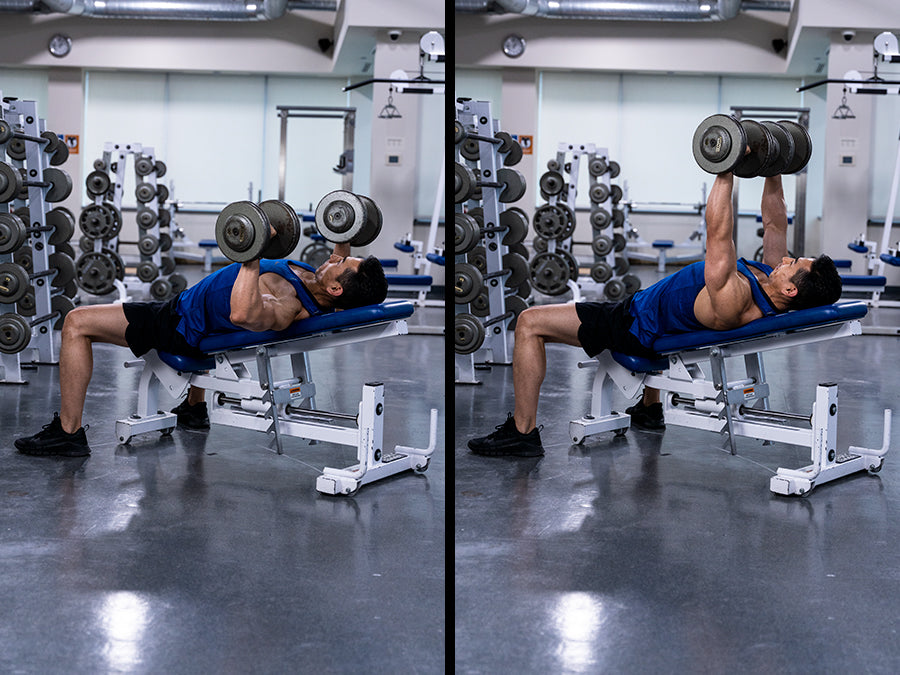
Chest Dips
Dips work your entire upper body, as well as your arms, shoulders, and upper back.
To do dips, head over to the dip machine or parallel bars. While standing in the center between both bars, place one hand on each bar and lift yourself off the floor, leaning forward until your chest is at a slight downward angle. Keep your elbows straight, your head in line with your trunk, and your wrists in line with your forearms. Then bring one leg across the other to stabilize the lower part of your body, and pull your abs in. Exhale, and bend your elbows to lower your body.
Lower yourself until your elbows are at a 90-degree angle and your upper arms are parallel with the floor. Pause, and then straighten your elbows, pushing into the bars with your hands to return to the starting position. Make sure to keep your body vertical and your wrists straight. Then repeat for your desired number of reps and sets.
When doing dips for the first time, or if you’re out of practice and are having difficulty doing unassisted chest dips, start with the assisted dips machine and then work your way up to the parallel bars.

Dumbbell Chest Fly
While pressing movements are vital for building a bigger chest, the dumbbell chest fly can help open up your chest muscles. Chest openers may help reduce upper back pain, increase range of motion, and reduce tightness in the upper body. The dumbbell chest fly also targets the sternal heads of your pectoralis major muscles, and strengthens your deltoids, biceps, triceps, wrist flexors, and brachialis muscles.
To perform a traditional dumbbell chest fly, you’ll need a flat bench and a set of two dumbbells. Lie flat on your back on a flat incline bench and place your feet firmly on the floor on either side of the bench. Then either ask a spotter to hand you the two dumbbells, or gently pick them up from the floor and hold one in each hand.
Lift your arms above your head so that they’re extended, but not locked out. There should be a slight bend at your elbow, and your palms and dumbbells should be facing each other. Inhale and slowly lower the dumbbells in an arc motion until they’re in line with your chest.
Your arms should be extended to the sides, but not locked out. Exhale and slowly press the dumbbells up in the same arc motion. Repeat for your desired number of reps and sets. And remember, your head and back should remain firmly pressed into the bench throughout this chest workout.
Dumbbell Chest Fly
While pressing movements are vital for building a bigger chest, the dumbbell chest fly can help open up your chest muscles. Chest openers may help reduce upper back pain, increase range of motion, and reduce tightness in the upper body. The dumbbell chest fly also targets the sternal heads of your pectoralis major muscles, and strengthens your deltoids, biceps, triceps, wrist flexors, and brachialis muscles.
To perform a traditional dumbbell chest fly, you’ll need a flat bench and a set of two dumbbells. Lie flat on your back on a flat incline bench and place your feet firmly on the floor on either side of the bench. Then either ask a spotter to hand you the two dumbbells, or gently pick them up from the floor and hold one in each hand.
Lift your arms above your head so that they’re extended, but not locked out. There should be a slight bend at your elbow, and your palms and dumbbells should be facing each other. Inhale and slowly lower the dumbbells in an arc motion until they’re in line with your chest.
Your arms should be extended to the sides, but not locked out. Exhale and slowly press the dumbbells up in the same arc motion. Repeat for your desired number of reps and sets. And remember, your head and back should remain firmly pressed into the bench throughout this chest workout.

Choosing Chest Exercises
Slight adjustments in how you perform a chest exercise can change which area of the chest is targeted. So, for targeted muscle growth, simply change the movement, the angle, and/or the type of resistance in order to recruit different muscle fibers and challenge your body in new ways.
Visit our Shop to Buy the Best Body Building Supplements
Read Our Top Read Content:

